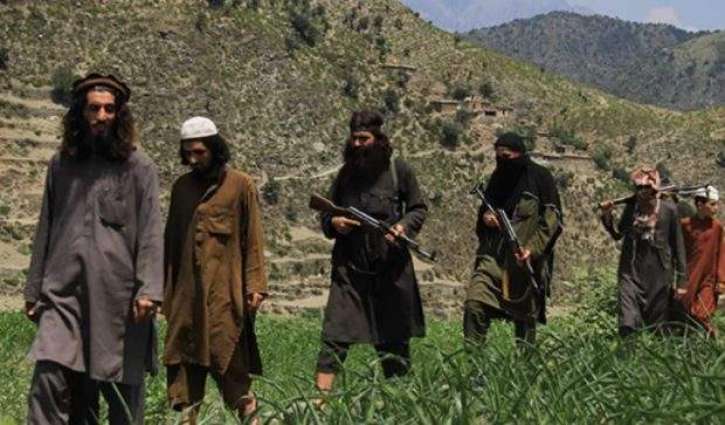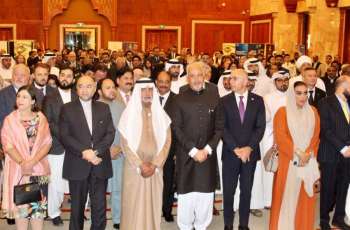Taliban fighters, whom US-led forces spent billions of dollars trying to defeat, are now openly active in 70% of Afghanistan, a BBC study has found. Months of research across the country show how areas the Taliban threaten or control have surged since foreign combat troops left in 2014
LONDON,(Pakistan Point News - 31st Jan, 2018 ) : Taliban fighters, whom US-led forces spent billions of Dollars trying to defeat, are now openly active in 70% of Afghanistan, a BBC study has found. Months of research across the country show how areas the Taliban threaten or control have surged since foreign combat troops left in 2014. The Afghan government played down the report, saying it controls most areas. But recent attacks claimed by Taliban and Islamic State militants have killed scores in Kabul and elsewhere.
Afghan officials and US President Donald Trump responded by ruling out any talks with the Taliban. Last year Mr Trump announced the US military would stay in the country indefinitely. The BBC investigation - conducted during late 2017 - provides a rare snapshot of the security situation in every Afghan district between 23 August and 21 November. A network of BBC reporters across Afghanistan spoke to more than 1,200 individual local sources, in every one of the country's 399 districts, to build up a comprehensive picture of all militant attacks over that period.
These conversations happened either in person or by telephone and all information was checked with at least two and often as many as six other sources. In some cases BBC reporters even went to local bus stations to find people travelling in from remote and inaccessible districts in order to double check the situation there. The results show that about 15 million people - half the population - are living in areas that are either controlled by the Taliban or where the Taliban are openly present and regularly mount attacks.
The extent to which they have pushed beyond their traditional southern stronghold into eastern, western and northern parts of the country is clearly visible. Areas that have fallen to the Taliban since 2014 include places in Helmand province like Sangin, Musa Qala and Nad-e Ali, which foreign forces fought and died to bring under government control after US-led troops had driven the Taliban from power in 2001. More than 450 British troops died in Helmand between 2001 and 2014.
"When I leave home, I'm uncertain whether I will come back alive," said one man, Sardar, in Shindand, a western district that suffers weekly attacks. "Explosions, terror and the Taliban are part of our daily life." The BBC research also suggests that IS is more active in Afghanistan than ever before, although it remains far less powerful than the Taliban. Gathering accurate and reliable data on the conflict has been getting harder since foreign combat troops pulled out and handed responsibility for security to Afghan forces.
Previous assessments of Taliban strength have not always had access to information from every district of the country, and have often carried the caveat they may have underestimated the real situation. The BBC study shows the Taliban are now in full control of 14 districts (that's 4% of the country) and have an active and open physical presence in a further 263 (66%), significantly higher than previous estimates of Taliban strength.
In the areas defined as having an active and open Taliban presence, the militants conduct frequent attacks against Afghan government positions. These range from large organised group strikes on military bases to sporadic single attacks and ambushes against military convoys and police checkpoints. Amruddin, who runs a local transport company, lives close to the front line in Baharak district in northern Badakhshan province, where the BBC monitored violence suggesting a medium Taliban presence.
"We live with constant fear. Whenever the government side starts fighting with the Taliban, we're caught in the crossfire, bringing life to a standstill. It's quiet at the moment but the Taliban are still here." In Taliban-controlled Sangin, father of eight Mohammad Reza, described life as "better" under the militants because there was peace. During the research period, the BBC study found 122 districts (just over 30% of the country) did not have an open Taliban presence.
These areas are ranked as under government control, but that does not mean they were free of violence. Kabul and other major cities, for example, suffered major attacks - launched from adjacent areas, or by sleeper cells - during the research period, as well as before and after. "People have no choice but to leave their homes, farms and orchards or stay and live with Taliban rule," Mahgul, a teacher from a northern district in Kabul province, told the BBC.
During the investigation, evidence of a hike in Taliban taxation across the country was also uncovered. In districts where they are openly present, the militants force farmers, local businesses and even commercial goods convoys to pay them tax while still leaving it to the government to foot the bill for basic services such as schools and hospitals. "They are charging people for the electricity that we supply!" one chief of a southern district reported. The BBC's research has been reviewed by the Kabul-based Afghanistan Analysts Network, which has been reporting on Afghanistan since 2009. Co-Director Kate Clark said: "Such a well-researched investigation into the Afghan war is rare and very welcome. The findings are shocking, but unfortunately not surprising - they ring true as an accurate mapping of the extent of the conflict.




